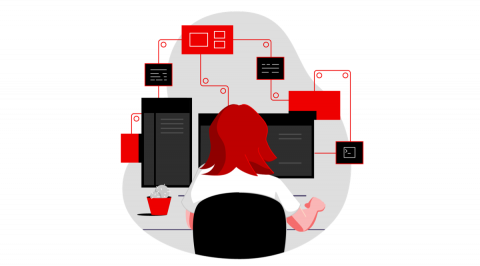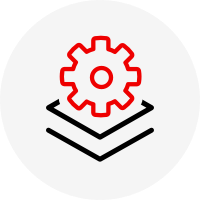Red Hat Ansible Automation Platform
Deploy consistent, reliable automation everywhere
Deploy consistent, reliable automation everywhere
Red Hat Ansible Automation Platform allows platform engineering and DevOps teams to create, manage, and scale automation across physical, cloud, virtual, and edge environments. With Ansible Automation Platform, you can drive consistency and manage compliance with automated workflows that span infrastructure, network components, applications, storage, security, ITSM, and more.
Create automation code using simple, YAML-based syntax supported by our full suite of Ansible features, tools, and components. Whether you’re new to Ansible, a seasoned expert, an IT operations engineer, or a Python developer, the resources you'll find here will help simplify, accelerate, and streamline the Ansible content creation process and boost your productivity.

Building on the foundation of its next-generation container-based architecture, Ansible Automation Platform 2.4 introduces many new features and capabilities that deliver simpler, more secure automation at scale.
Event-Driven Ansible, first announced as technology preview at AnsibleFest 2022, is now available in this release. It provides the ability to automatically respond to environment changes based on environment intelligence. It works flexibly and well with multi-vendor monitoring and other solutions across the event driven architecture with appropriate approvals, controls and awareness.
Validated content integration: Ansible Automation Platform 2.4 brings more integrated experience for validated content. Validated content is now available through Ansible automation hub and is also pre-loaded into private automation hub for easy access. It covers many use cases such as infrastructure, networking, edge, security and hybrid cloud.
Red Hat Ansible Lightspeed with IBM watsonx Code Assistant: Ansible Lightspeed with watsonx Code Assistant integrates artificial intelligence with your Ansible automation. Designed to be accessed via Ansible VSCode extension, it allows users to accept and run recommended code directly in their code editing environment while creating Ansible playbooks. Click here to learn more.

Edge automation with Ansible Automation Platform takes IT automation out of the datacenter and into edge devices and workloads that are actually being automated. Many devices are in use at remote locations, where there may not be IT staff available to maintain and configure them. Ansible Automation Platform can help you centrally automate the provisioning of devices and processes far from your infrastructure’s core.

To support cloud-native development, Ansible Automation Platform is now available on Microsoft Azure as a managed offering and on AWS and Google Cloud Platform (GCP) as a self-managed offering supported by Red Hat. These new offerings provide complete Ansible Automation Platform capabilities, including integration with native Azure, AWS, and GCP services and integrated billing for added flexibility and speed.
Learn moreRed Hat understands that today’s enterprises use a wide variety of tools and vendors to manage their IT estate, and Ansible Automation Platform was designed to work seamlessly with them. Ansible Automation Platform includes hundreds of modules to support a wide variety of IT integrations. Browse integration solutions below.
Red Hat’s product development cycle has always been rooted in open source and the communities that help to steer Red Hat’s products’ direction. Like Fedora is the upstream project for Red Hat Enterprise Linux, the projects listed here are the upstream versions of products that make up the Red Hat Ansible Automation Platform.
Ansible developers (including community contributors) add new features, fix bugs, and update code in many different repositories in the Ansible community. The ansible/ansible repository contains the code for basic features and functions, such as copying module code to managed nodes. This code is also known as ansible-base.
AWX is the upstream project from which the Red Hat Ansible Tower offering is ultimately derived. AWX is designed to be a frequently released, fast-moving project where all new development happens.
Galaxy provides pre-packaged units of work known to Ansible as roles and collections. Content from roles and collections can be referenced in Ansible playbooks and immediately put to work. You'll find content for provisioning infrastructure, deploying applications, and all of the tasks you do every day.
For those who are looking to connect with other Ansible developers and collaborate on your deployments or content, please visit the developer mailing list to sign up and get started.